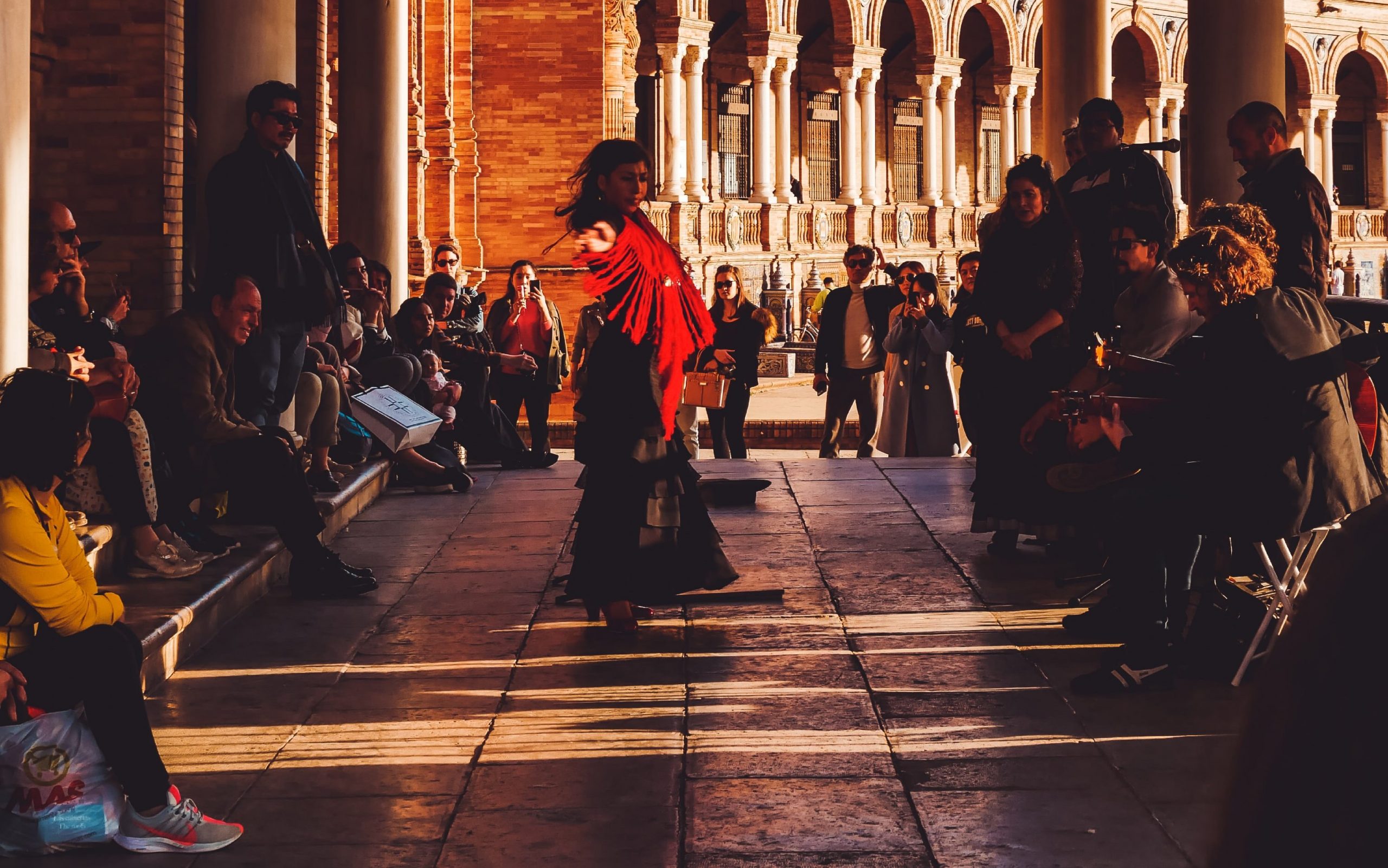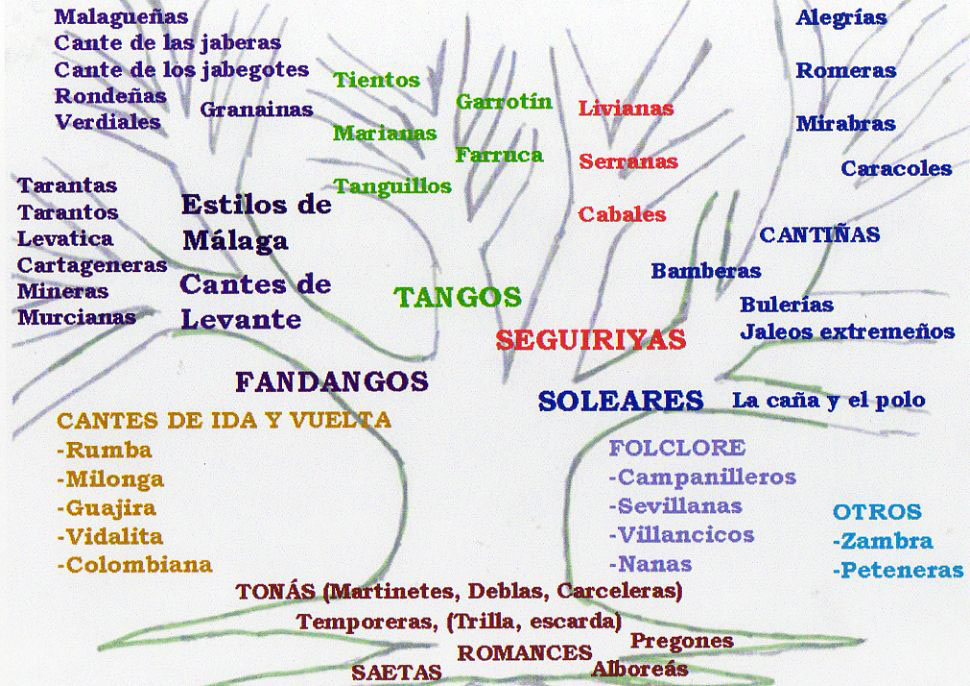If you think about Spain, you think about those Flamenco dancers, dressed in red, stomping the ground and raising their skirts in the air right? After all, it’s deeply embedded into their culture, they may as well be a national dance. But how did Flamenco become one of Spain’s cultural traditions? How did it start? Where did it come from? What is it all about? Don’t worry, we’ll answer all your questions here. In fact, we’ll take an in-depth look into what Flamenco is and how it became a national culture for Spain.
Flamenco – The Culture
First, there’s something you need to know about Flamenco. It’s not just a type of music or dance. It’s a culture. It originated in the Andalusia region in Spain. Actually, not much is known about its origin, except that the Spanish Gypsy community is what led to its rise in popularity in Spain. It is said that they were a key instrument in developing it into a culture in the Andalusian region, but it was developed over time, thanks to the mix of cultures in the area.
However, it is known that Flamenco music and dance were performed in the privacy of Spanish homes, before being performed outside cafes and public spaces in the 18th Century. And over time, it’s developed into a tradition of expression and has become a widely popular spectacle all over Spain. In fact, you can even try to catch a performance or two by going to a “tablao”, which specialises in Flamenco performances or try to catch a bigger concert or show that’s usually held in large venues and concert halls around Spain.
The Music
Originally, there wasn’t any instrumental music involved, the only music that existed in the dance was the clapping of hands or “toque de palmas”, the stomping of the feet and singing. However, with the development of modern music, you’re more likely to hear a guitar, piano, violin and even a cajón, or percussions along with the clapping, singing and stomping. Of course, some performers do include a dance or two that follow the original style, so you can experience both the modern interpretation and the traditional form of Flamenco in one sitting.
The music itself is actually divided into many parts called “palos”. These palos are distinct musical styles and forms within the Flamenco umbrella, and each one has its own rhythm, mode, lyrics, and name. You may even hear a performer saying the name of the palo that they’ll be performing next, like “bulería” or “alegría”, to let you know what they’re going to do. While there are sections that are common in Flamenco performances, there are lots of more specific palos that express specific emotions. You can see them on the Flamenco Palo tree.
Can Anyone Dance?
Technically, anyone can learn Flamenco, as long as you know people who have had experience in it before. Most dancers tend to learn from family, friends and neighbours, and because it’s a very expressive dance, everyone puts their own spin on it. However, there are some professionals who are trained in the dance, and there are some dance schools that will teach it, so even if you don’t come from a family with a background in Flamenco, you can still learn the basics.
Just remember, it is also an art form, so you’d need to be very expressive. It can be romantic, or somber. It can sometimes be jolly or comforting. Whatever style you perform, it needs to have the same energy as the music or claps that you dance along to. It’s not a shy dance, like a waltz or a quickstep. You’d need to be bold, and let go of you inhibitions, to really feel the music as you dance.
How Do You Learn The Palos?
Most of the time, Flamenco dancers spend lifetimes learning the palos of the dance, and even then, many don’t learn them all. The reason why is that each palo takes time and discipline to learn. Think about it this way, ballerinas spend years learning, practicing and performing, and many will only dance a few different shows, like Swan Lake or The Nutcracker. There are so many other renditions of these shows, and even more beyond that. So, it’d be difficult to learn every dance step of every show. The same goes for Flamenco.
There are at least 20 palos on that tree, and it’s almost impossible to learn all of them. That’s why most Flamenco dancers stick to one or two palos, because they know the steps, they know the rhythm, and they associate with those dances the best. After all, each dance is different, and even performers express their own versions differently. Some are slow, while others are fast, and it can be jarring to learn both. So, if you’re going to learn Flamenco, choose one palo and learn to be comfortable with it, before attempting to dance the others.
Where Is It Performed?
As with most Latin dances, they can be performed almost anywhere, on the side of the street, in a concert hall, or even at parties and celebrations. So, if you’re learning Flamenco, alongside your Spanish courses with us, at Language Atlas, then you might be able to impress your family and friends with your moves. Just be mindful of what palo you dance. You don’t want to dance something romantic at someone’s funeral, or wedding, especially if it’s aimed at the bride or groom. And you don’t want to dance anything too somber at a birthday party.
So, if you’d like to learn Flamenco, try to find your nearest school. You can find them all over the world, and learn the different techniques and styles that make up the art form. And if you’re daring and ready to try, put your own spin to it. After all, the Paso Doble incorporates Flamenco styles in the dance, and even the Tango and Rumba have some Flamenco flourishes too. It’s not restricted to its culture, but can be used nearly anywhere. So, give it a go.




